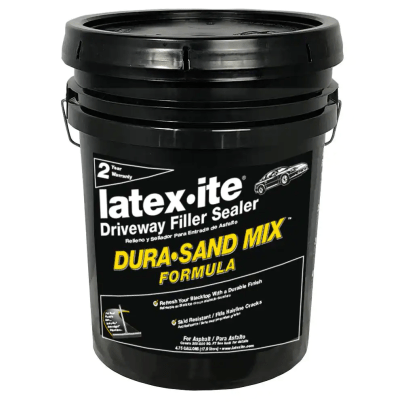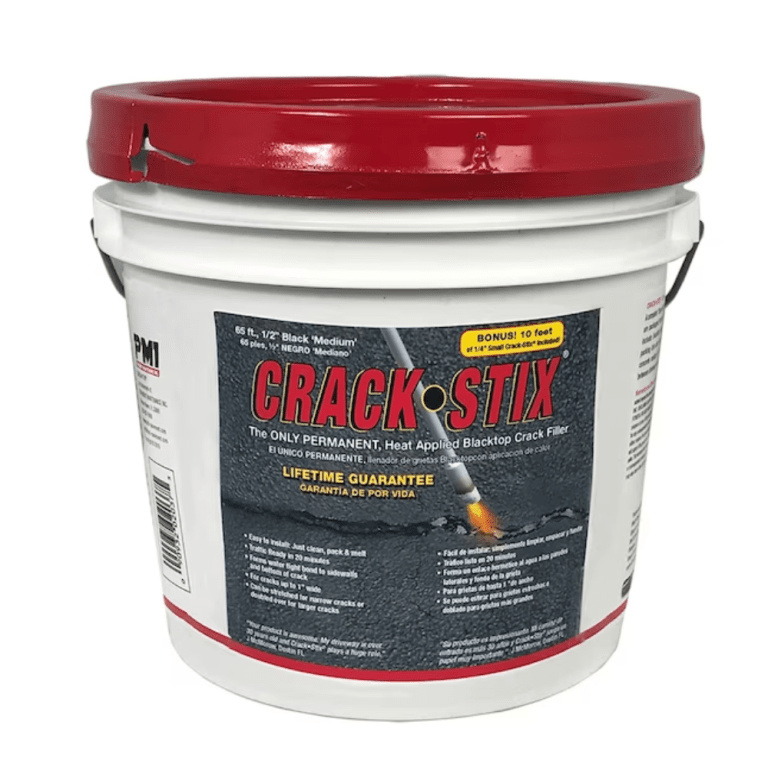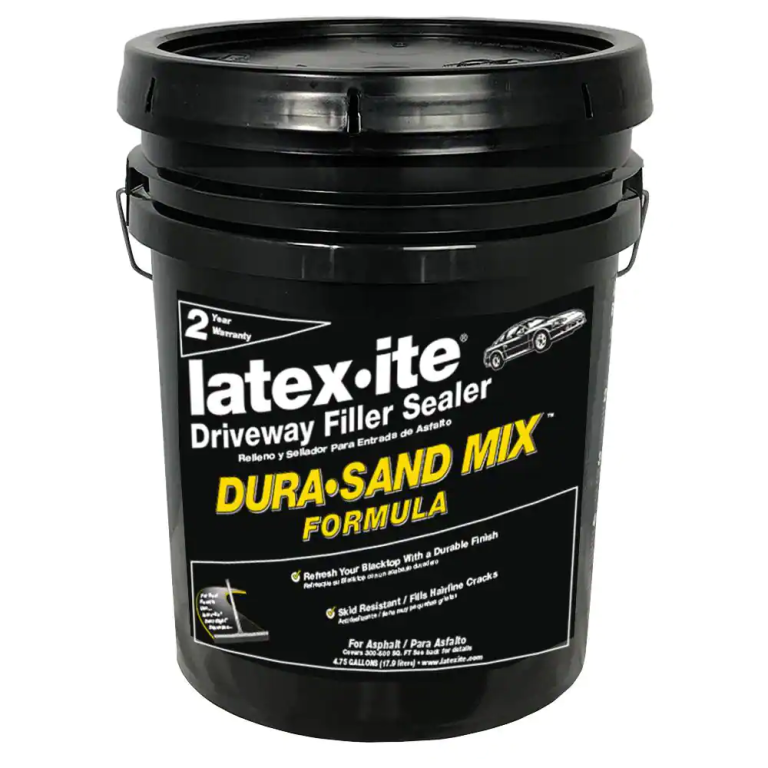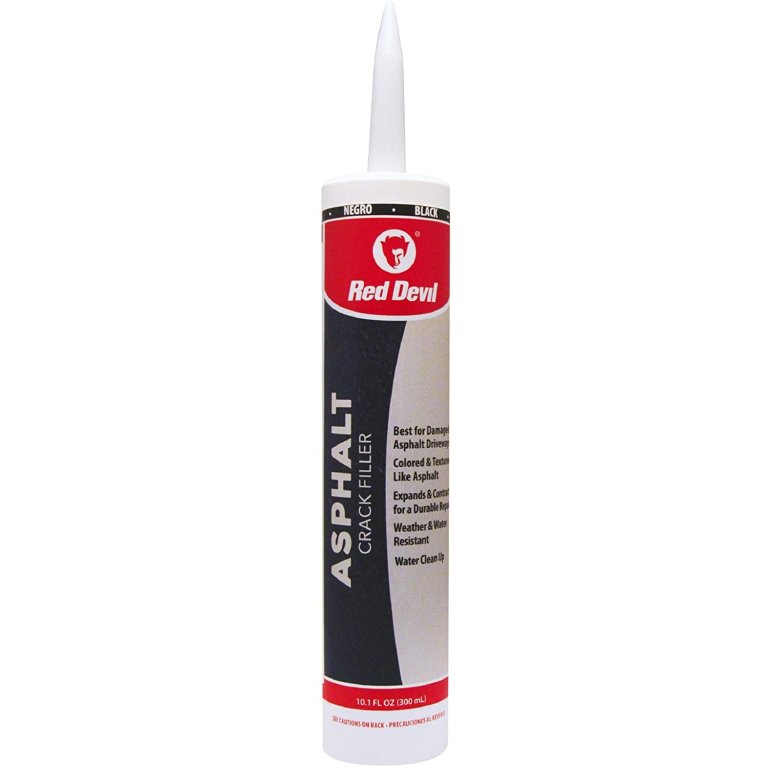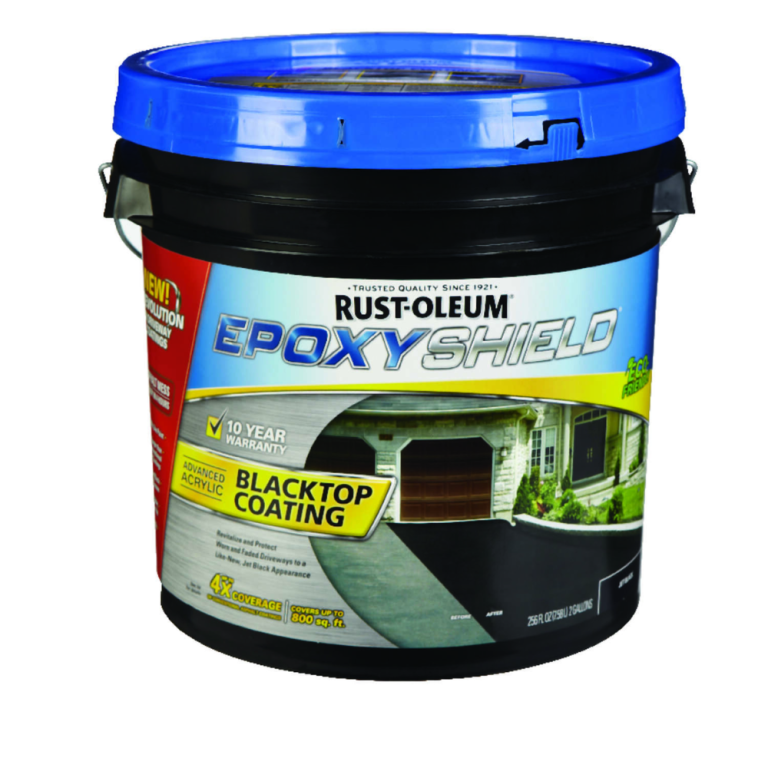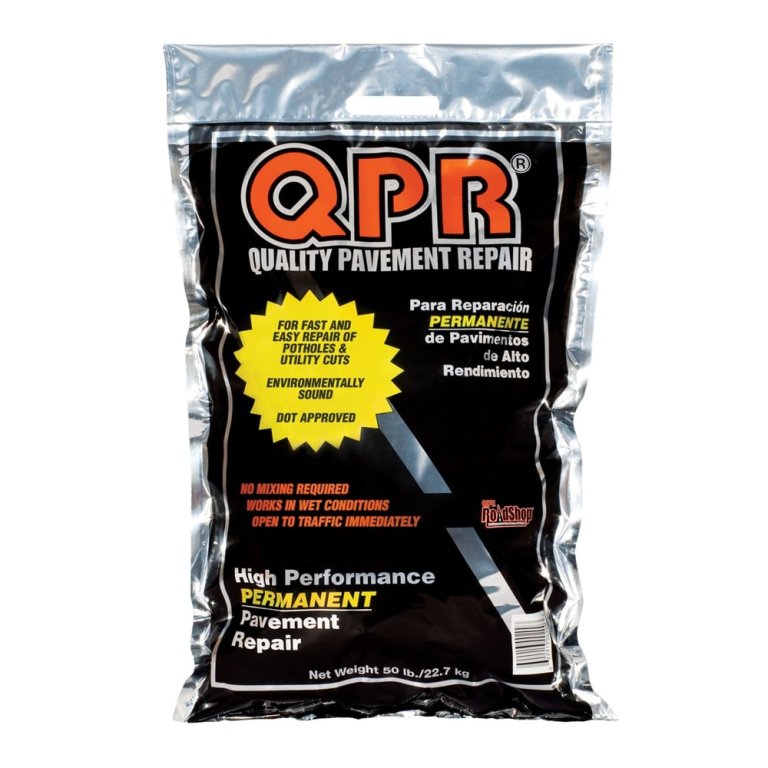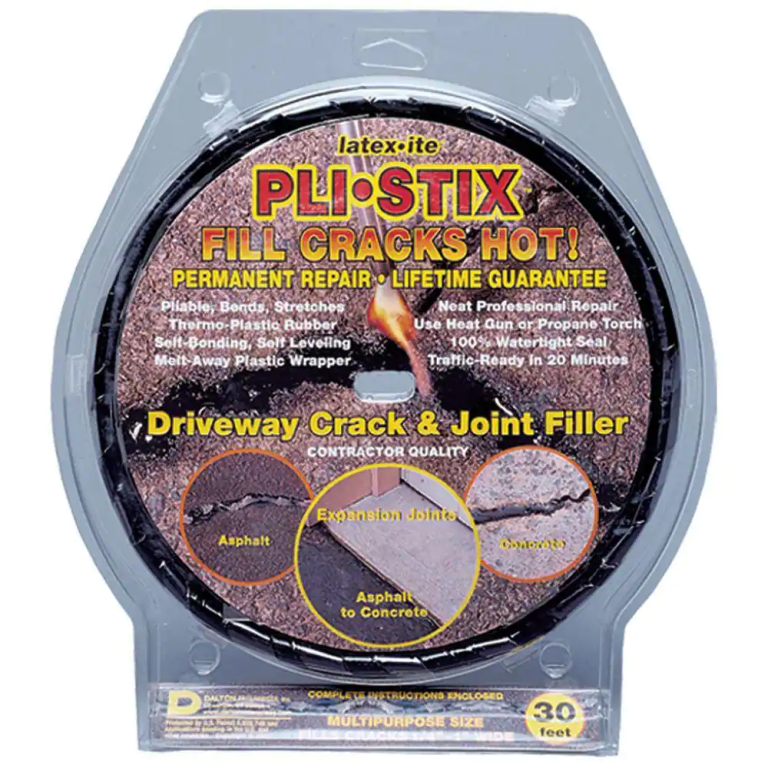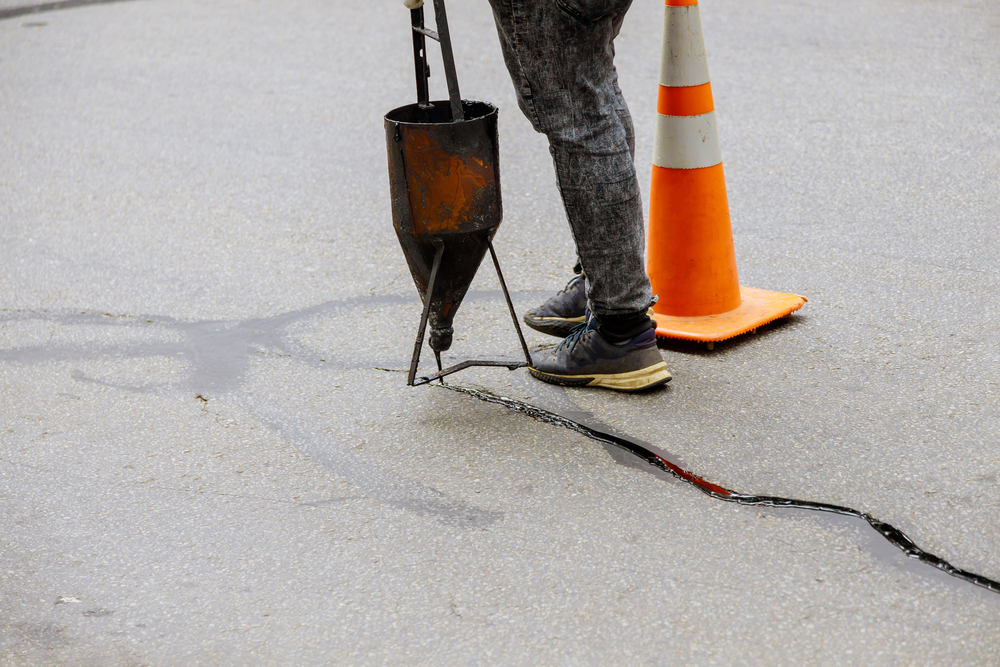
We may earn revenue from the products available on this page and participate in affiliate programs. Learn More ›
A cracked driveway can be unsightly, plus it can lead to more extensive damage if left untreated. Cracks allow moisture to seep into the asphalt, which can erode the base of the driveway and cause the cracks to widen as the water freezes and thaws. These cracks also can accumulate dirt, debris, and weeds that might grow within them.
Sealing all the cracks soon after they appear is one of the best actions to take for extending the longevity of an asphalt driveway. Fortunately, there are products on the market that can help seal asphalt cracks without having to hire a contractor.
Read on to learn about the key characteristics to consider while shopping, and discover some of the best asphalt driveway crack filler options available.
- BEST OVERALL: Crack-Stix Black Permanent Crack Filler
- RUNNER-UP: Latex-ite Dura Sand Mix Driveway Filler Sealer
- BEST BANG FOR THE BUCK: Red Devil Asphalt Crack Filler Cartridge
- BEST EPOXY: Rust-Oleum EpoxyShield Blacktop Filler Sealer
- BEST ECO-FRIENDLY: QPR High-Performance Permanent Pavement Repair
- BEST FILLER ROPE: Latex-ite Pli-Stix Asphalt Crack Filler

How We Chose the Best Asphalt Driveway Crack Fillers
The right asphalt driveway crack filler can help give a home better curb appeal and prevent potholes and weeds. Selections for the best asphalt crack fillers depended upon their ease of application, durability, formula, and compatibility with crack size and driveway type.
Many of these top picks have been made with ease of application in mind, requiring little pre-care or post-care, though you may want to use the best weed killer before filling cracks. Some options do require tougher applications and aftercare, and each is made to be permanent and weather-resistant after drying. Some picks also dry quickly, in a matter of hours to 2 days.
Select above picks also are made with no volatile organic compounds (VOCs) emitted and no coal and tar mixed into their formulas. For added convenience, the above top picks offer a selection of fillers made to plug ⅛-inch to ½-inch cracks on asphalt, concrete, and other blacktop surfaces.
Our Top Picks
Now that you know more about asphalt driveway crack fillers, it’s time to start shopping. These recommendations are among the best asphalt crack fillers in their respective categories for repairing different types and sizes of cracks.
Best Overall
Crack-Stix Black Permanent Crack Filler
Pros
- Makes a permanent seal that expands and contracts with existing asphalt
- Is an environmentally friendly option that doesn’t emit VOCs
- Patch is usable immediately from the tub; the wrapper melts away
Cons
- Requires a blowtorch to apply; not all households will have one
- Meant for larger cracks; smaller hairline cracks will be too small for the product to fit
Product Specs
- Ease of use: Difficult
- Quantity: 65 linear feet
- Compatibility: Asphalt and concrete
For an easy and permanent solution to driveway repair, Crack-Stix offers 65 linear feet of commercial-grade asphalt filler rope. Originally formulated for use on highways, this ½-inch rope can be pressed into cracks between ¼ and ½ inch wide to seal them permanently. The asphalt-based compound expands and contracts with the existing asphalt, and doesn’t emit any harmful VOCs. The filler cures in about 30 minutes.
Note that this filler rope requires a blowtorch to melt and spread the material in the cracks, and it might be too large for cracks smaller than ¼ inch wide. Crack-Stix also might require a little more prep work than other options, including the possible need to backfill deeper cracks with sand or other filler material.
Get the Crack-Stix asphalt driveway crack filler at Lowe’s or a 125-foot option at The Home Depot.
Runner Up
Latex-ite Dura Sand Mix Driveway Filler Sealer
Pros
- Rubberized formula can fill hairline cracks easily to prevent further damage
- Product incorporates sand to provide excellent traction control on surface
- Nonskid formula is also coal- and tar-free for a low-VOC filler
Cons
- Thinner formula is not meant for larger cracks
- May require multiple coats to achieve optimal results
Product Specs
- Ease of use: Moderate
- Quantity: Up to 400 to 500 square feet, depending on the surface
- Compatibility: Asphalt only
For sealing multiple cracks over a large section of a driveway, the 4.75-gallon pail of Latex-ite’s asphalt-based sealant can cover up to 500 square feet on smooth or previously sealed driveways, or up to 400 feet on more porous or unsealed surfaces. It’s applied with a squeegee or broom, and provides a smooth cover and seal over the driveway’s hairline fractures. It also incorporates sand into the formula for a skid-free, high-traction surface.
Once you’re finished applying the crack filler, cleanup is done with soap and warm water. This formula is designed mainly for hairline cracks, so it might not be ideal for cracks larger than ⅛ inch wide. Two coats of this sealer can add a protective membrane to the driveway that lasts 3 to 5 years.
Get the Latex-ite asphalt driveway crack filler at The Home Depot or Walmart.
Best Bang for the Buck
Red Devil Asphalt Crack Filler Cartridge
Pros
- Flexible and weather-resistant product that forms a water-resistant seal
- Comes in a caulk tube for easy application
- Does not emit any harmful VOCs and is made in the USA
Cons
- Small tube is made for small crack repairs only; has limited coverage per tube
Product Specs
- Ease of use: Easy
- Quantity: 10.1 fluid ounces (55 linear feet with 3/16-inch bead)
- Compatibility: Asphalt, concrete, and blacktop
For a resilient seal at an affordable price, Red Devil’s acrylic asphalt crack filler is hard to beat. It comes in a tube that applies easily using a caulking gun, plus it cleans up with water only. The Red Devil filler leaves a clean-looking, smooth finish in cracks as large as ½ inch wide.
Although a single tube will seal only a handful of cracks, it’s an effective and inexpensive solution for small-scale problems. Since it’s an acrylic formula, the filler is highly flexible and weather-resistant. It lasts longer than asphalt or coal tar formulas and doesn’t emit any harmful VOCs.
Get the Red Devil asphalt driveway crack filler at Amazon.
Best Epoxy
Rust-Oleum EpoxyShield Blacktop Filler Sealer
Pros
- Highly durable product that resists UV rays as well as gas and oil spills
- Fast-drying formula is very easy to apply and dries in 4 hours
- Impressive coverage of 600 square feet coverage from just 2 gallons
Cons
- Made for cracks under ⅛ inch wide; less suitable for large cracks
Product Specs
- Ease of use: Easy
- Quantity: Up to 600 square feet
- Compatibility: Asphalt only
As an epoxy sealant, Rust-Oleum’s EpoxyShield is UV-resistant, gas- and oil-resistant, and highly flexible. It doesn’t emit harmful VOCs and will last longer than most conventional formulas. This asphalt filler also goes on easily with a roller, squeegee, or broom. It cleans up easily with water only.
One 2-gallon bucket offers impressive coverage of up to 600 square feet. The epoxy formula dries and is ready to be driven over in 4 hours, which is considerably faster than other options. It’s one of the more expensive formulas, but offers value over time due to its longevity. This filler is best suited for sealing cracks under ⅛ inch wide.
Get the Rust-Oleum asphalt driveway crack filler at Ace Hardware.
Best Eco-Friendly
QPR High-Performance Permanent Pavement Repair
Pros
- Eco-friendly option; nontoxic formula with no water runoff toxicity
- Weather-resistant additive performs well under wet conditions
- Suitable for potholes as well as cracks; ideal for general driveway repair
Cons
- More difficult to fix hairline cracks with this product
Product Specs
- Ease of use: Moderate
- Quantity: 50-pound bag (2 bags fill a 2-foot by 2-foot by 2-inch deep hole)
- Compatibility: Asphalt and concrete
QPR’s asphalt patch is different from other asphalt fillers, since it’s not a liquid formula. The filler consists of dry aggregate material that emits no VOCs and has 0 percent water runoff toxicity, establishing it as one of the most eco-friendly asphalt fillers available. This patch can be applied during any weather conditions, and can also be used to fill potholes that are holding water.
To apply, spread the aggregate in the area that needs patching, then compact it with a tamper, board, or even a car. Allow the binding agent to do its work in creating a permanent and weather-resistant seal.
Although it’s environmentally sustainable, the QPR patch is not suitable for sealing an entire driveway or filling small cracks, and is best for large asphalt cracks and potholes usually found in heavy vehicle traffic areas.
Get the QPR asphalt driveway crack filler at Lowe’s.
Best Filler Rope
Latex-ite Pli-Stix Asphalt Crack Filler
Pros
- Fast drying and ready for traffic in just 20 minutes
- Forms a waterproof bond that can expand and contract along with the surface
- Provides a permanent seal; helps prevent slips and falls and unsightly cracks
Cons
- Requires a blowtorch or heat gun to apply
- Not meant for cracks exceeding 1 inch wide
Product Specs
- Ease of use: Difficult
- Quantity: 30 linear feet
- Compatibility: Concrete and asphalt driveways
For deep asphalt cracks up to 1 inch wide, Latex-ite’s Pli-Stix filler rope offers a permanent seal that’s flexible and waterproof. This Pli-Stix consists of a ½-inch-wide asphalt rope that is pressed into cracks, then melted to create a self-leveling and permanent seal.
This contractor-grade product provides a quick, easy, and affordable solution to driveway cracks without the hassle and mess of a whole driveway sealcoat (provided you have a heat gun or blowtorch). Deep cracks might need backfilling before pressing in this rope. After heat treatment, the affected area is ready for foot traffic in about 20 minutes.
Get the Latex-ite Pli-Stix at The Home Depot.
Jump to Our Top Picks
What to Consider When Choosing an Asphalt Driveway Crack Filler
Since cracks come in many shapes and sizes, it’s important to select a product that’s formulated for the type of cracks most prevalent on your driveway. The following key characteristics can help you choose the best asphalt driveway crack filler for your specific situation.
Formula
Most asphalt crack fillers are made primarily with asphalt, coal tar, acrylic, and epoxy. Of these, asphalt and coal tar are the most common base ingredients.
- Coal tar crack fillers contain a thick and sticky material made from coal, and are more commonly used in sealer products that cover the entire driveway. Coal tar sealers are often mixed with water and polymers to help with spreading, since the consistency of pure coal tar would be too thick to use. Though coal tar is an affordable sealing solution, the material emits large amounts of toxic and environmentally detrimental volatile organic compounds (VOCs). For this reason, coal tar asphalt fillers have largely fallen out of favor and have been banned (or regulated) in several states. Other disadvantages include coal tar’s susceptibility to UV degradation and staining.
- Asphalt-based crack fillers are a safer and more environmentally friendly alternative to coal tar sealers. They are generally affordable and highly durable. Asphalt-based formulas can be found in bulk solutions to seal entire driveways or fill individual cracks. Another popular option is filler ropes, which are composed of thin, ropy strips of asphalt emulsion. The ropes are packed into cracks and melted with a blowtorch to completely and permanently seal the crack. Just like coal tar, asphalt repair formulas are susceptible to UV degradation and solvent staining.
- Epoxy and acrylic crack fillers are fairly similar to one another and offer benefits like UV protection, a longer lifespan, and oil- or gas-stain resistance. The main difference between the two formulas is that epoxy is usually thicker, lasts longer, and is often more expensive than acrylic formulas. Acrylic and epoxy formulas are preferred in hot and sunny climates because of their superior UV protection. While epoxy and acrylic crack fillers are more expensive than coal tar or asphalt repair products, they offer a longer-lasting seal and prevent unsightly driveway stains.
Along with the primary base ingredient, crack fillers often include compounds like sand, latex, and other additives. Sand is added for surface traction to prevent people from slipping or car tires from skidding.
Latex and similar additives are added to a sealer to help it bond to the asphalt, extend its longevity, reduce drying time, and make the finished seal more solvent resistant. Some additives also give the asphalt a darker and more aesthetic appearance.
Crack Size
Most crack filler formulas can patch hairline cracks to larger cracks up to ½ inch wide, depending on the formula and application process used. If you’re trying to fill several fine surface cracks, it’s best to apply a sealer over the entire affected surface of your driveway.
For larger cracks between ¼ and ½ inch, the flexibility and elasticity of the formula you use is important. Since asphalt expands and contracts with outdoor temperature fluctuations, the crack filler should be capable of accommodating the natural movements of the asphalt.
The inherent flexibility of epoxy and acrylic is one of the reasons they tend to have a longer lifespan than other crack filler types, but asphalt repair formulas also expand and contract nicely.
Although you can fix fairly large, surface-level cracks with filler formulas, there is one type of cracking that shouldn’t be filled: crocodile cracks. Crocodile cracking, also called alligator cracking, has a distinct appearance that looks like the scales on a reptile and indicates a failure of the subbase that requires a more extensive repair by a professional. Filling over crocodile cracking is only a temporary cosmetic solution and will not inhibit further damage to your driveway.
Application
A crack filler can be applied in a few different ways depending on the type, purpose, and consistency of the formula you’re using. Sealer formulas used to fill hairline cracks can be spread with a paint roller, sprayer, broom, or squeegee to evenly spread the formula over the affected area.
Filler formulas used for larger cracks are often applied with a trowel or caulking gun, depending on whether the formulas come in a can or caulking tube. Caulking guns will generally be cleaner and look better than spreading the material with a trowel, since the caulking gun allows for greater precision.
Filler ropes can also be used on larger cracks by firmly pressing the rope into the crack and then applying a blowtorch to melt the formula so it can fill the crack and blend with the rest of your driveway. Regardless of the type of crack filler you use, follow the application instructions recommended by the manufacturer.
Some prep work is recommended before using most fillers, which usually involves cleaning up crumbling bits of debris with a brush and widening any cracks smaller than ⅛ inch wide with a hammer and chisel. Most filler and sealer manufacturers specify suitable temperature and weather conditions for applying the product.
Most recommend late spring and early fall applications, or whenever temperature is consistently between 50 and 95 degrees Fahrenheit. Temperatures that are either too high or too low can inhibit the sealer’s adherence to the asphalt and may cause the finished product to peel and separate. There should be no rain expected for up to 48 hours after application, which can prevent the seal from drying fully and evenly.
Drying Time
The time it takes for a filler or sealer to dry will depend on the formula used and the weather conditions. Product manufacturers state how long you should allow their product to dry. In general, the sealed surface will be dry to the touch and can be walked on after 2 to 4 hours, and can be driven over after 24 to 48 hours.
If you want to minimize drying time, apply the crack filler during the heat of the summer or consider using a heat gun or blowtorch for supplemental heat. Fast drying fillers are also available, containing a special gel that can reduce drying time to approximately 1 hour.
While you typically pay a premium for this additional feature, fast-dry formulas are especially valuable in high traffic areas that can’t be blocked off for long periods of time.
Weather Resistance
Filler formulas have varying weather-resistance ratings and different tolerances for hot and cold climates. All types of crack sealers and fillers are designed to resist moisture, but only after they have properly dried. Exposure to rain or high humidity before drying could hinder proper adhesion to the asphalt and could give an uneven blotchy appearance if different sections dry at different rates.
Although all types will be resilient to moisture once dry, not all crack fillers are equally resilient against UV exposure. Epoxy and acrylic formulas typically have the highest UV-resistance qualities, which is one of the reasons they tend to last the longest and are the most expensive. These fillers are more flexible than asphalt and coal, which helps them accommodate the expansion and contraction of significant temperature variations.
Longevity
As a general rule, an asphalt driveway should be completely resealed every 3 years, but your driveway may need maintenance more or less often depending on the formula that you use. Just as different types of formulas have varying weather-resistance ratings, they also vary in lifespan.
Asphalt and coal tar sealers can last between 1 to 5 years, acrylic sealers usually last 3 and 5 years, and epoxy sealers can last 5 to 10 years. Along with those guidelines, a sealer’s longevity varies across manufacturers and will be influenced by weather conditions and traffic exposure.
FAQs
The idea of filling asphalt cracks or sealing your own driveway may seem overwhelming and a little intimidating, so it’s natural to have questions. Reference these answers to give you peace of mind before sealing or filling your driveway cracks.
Q. What’s the difference between a crack sealing and crack filling?
Crack sealing involves covering your entire driveway with a protective coating of sealant, whereas crack filling involves covering and sealing individual cracks in the asphalt. Crack sealing is more expensive and effective for sealing a large area riddled with hairline cracks, while filling asphalt cracks is more affordable and ideally suited for filling large crevices.
Q. Why do you need to fix the driveway asphalt crack?
Sealing cracks will prevent moisture accumulation. When water in a crack expands and contracts with temperature fluctuations, it can further deteriorate the asphalt.
Q. Can you use epoxy or caulk to repair your driveway?
You can use epoxy sealants and caulks to both seal and fill driveway cracks, and caulking can be used to fill isolated driveway cracks.
Q. How much asphalt filler do you need?
The amount of filler you need will depend on the specific formula you choose and whether you want all-around driveway repair or just filling in individual cracks. Manufacturers indicate how much square feet their fillers will cover. However, it’s often recommended to purchase a little more than you think is necessary to avoid running out of filler mid-project, giving the seal an uneven appearance.
Q. How do you heat up asphalt crack filler?
Most asphalt crack fillers don’t require preheating, but the surface temperature of your driveway should be warm enough for proper adhesion, drying, and curing. Filler ropes need to be heated and melted with a blowtorch after they’re pressed into the crack.
Q. How long will an asphalt driveway crack repair last?
Crack fillers and sealers can last between 1 and 10 years, with the average lifespan being between 3 and 5 years.

